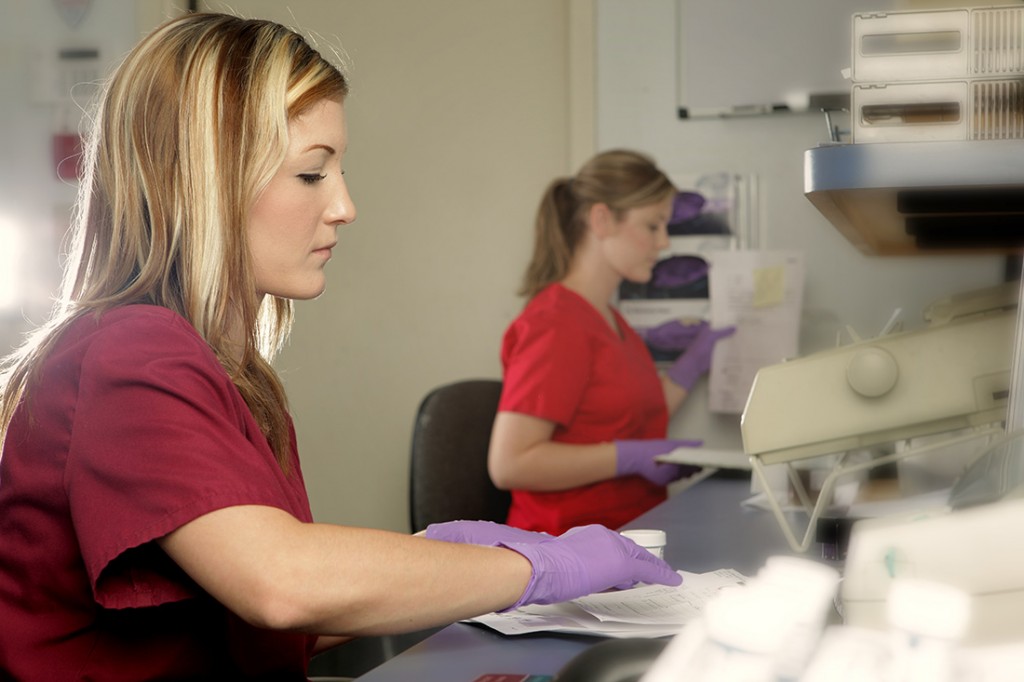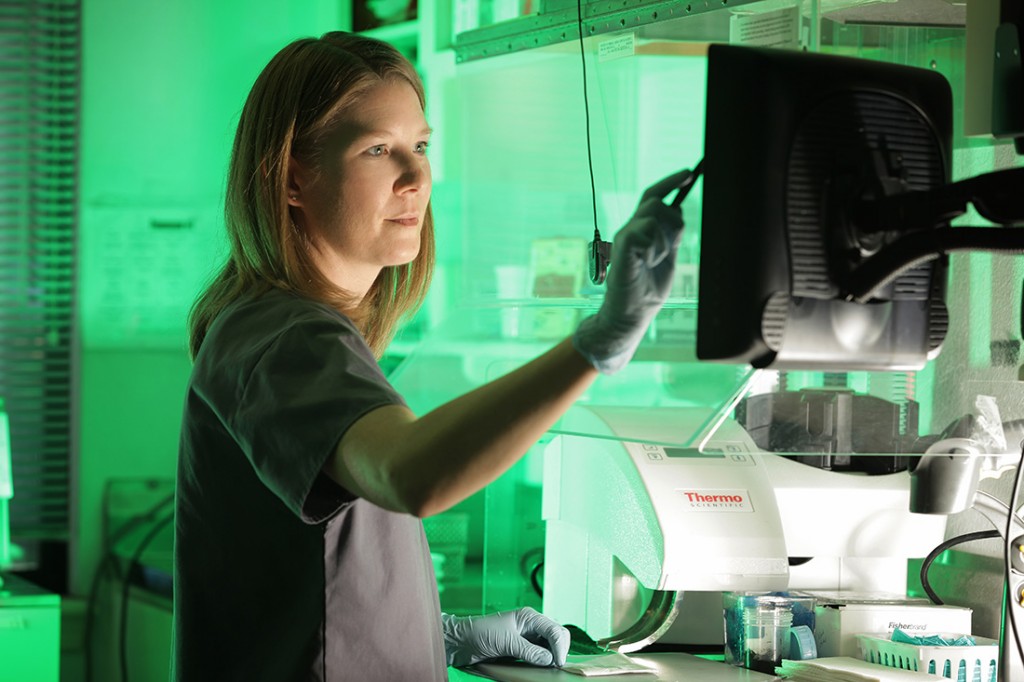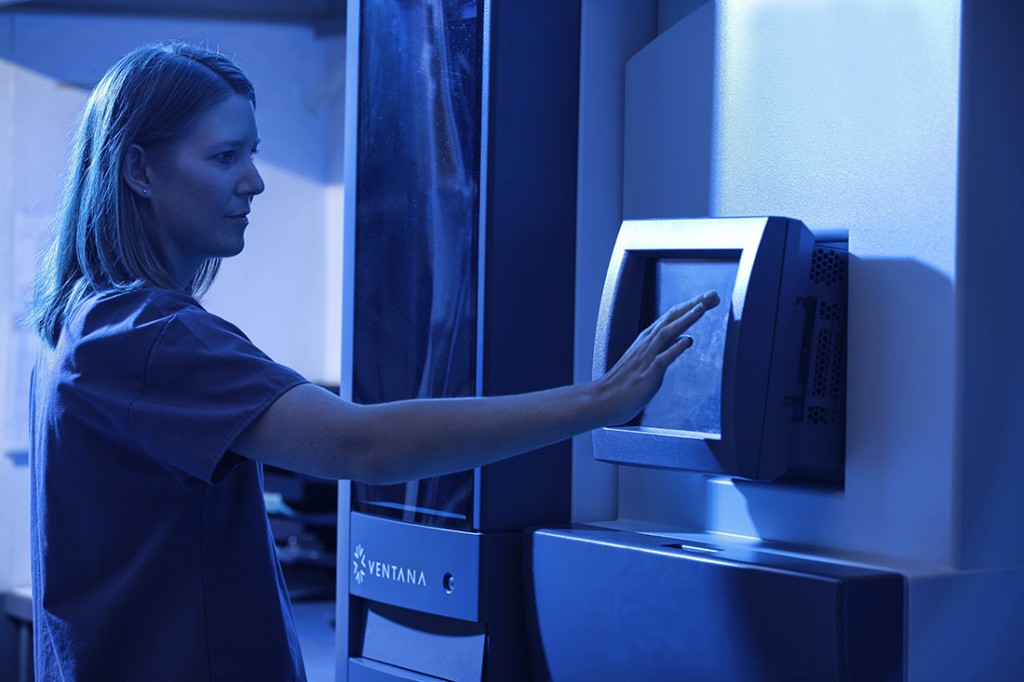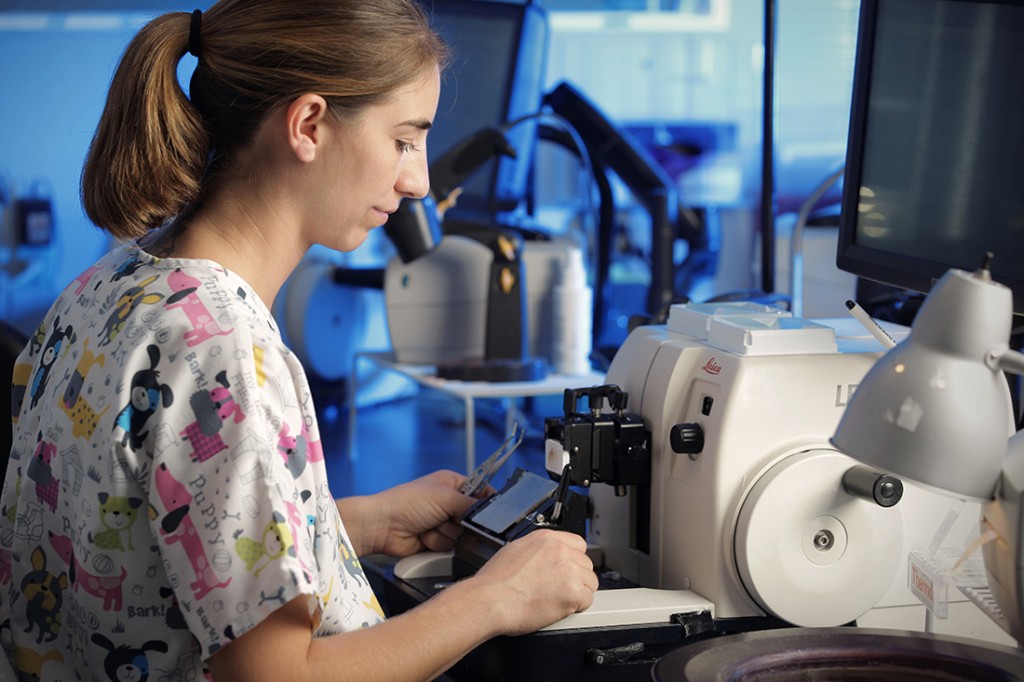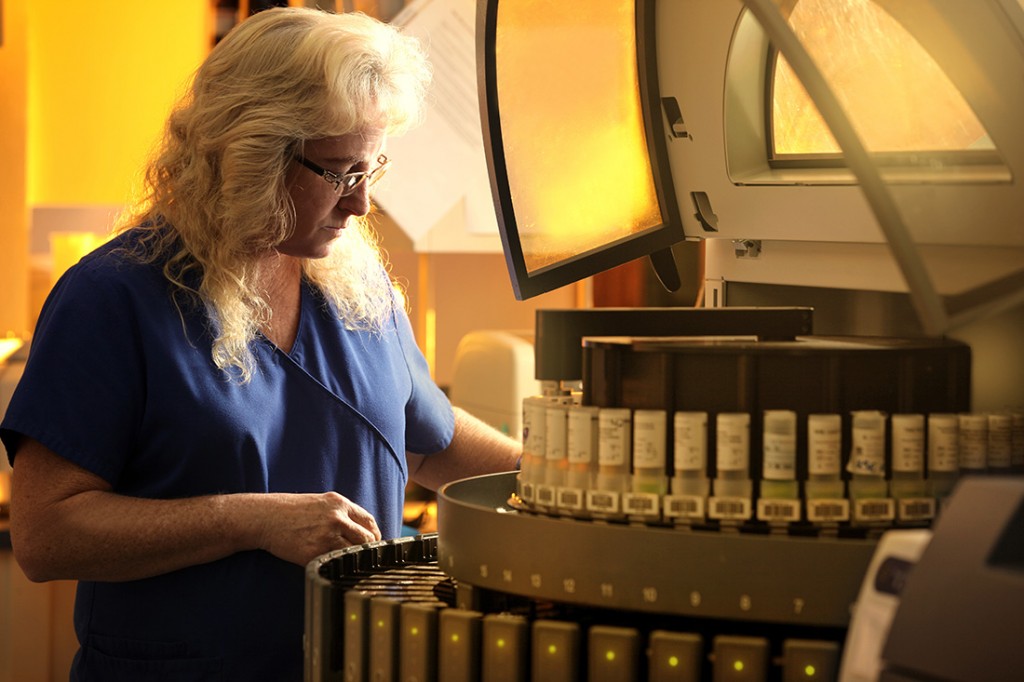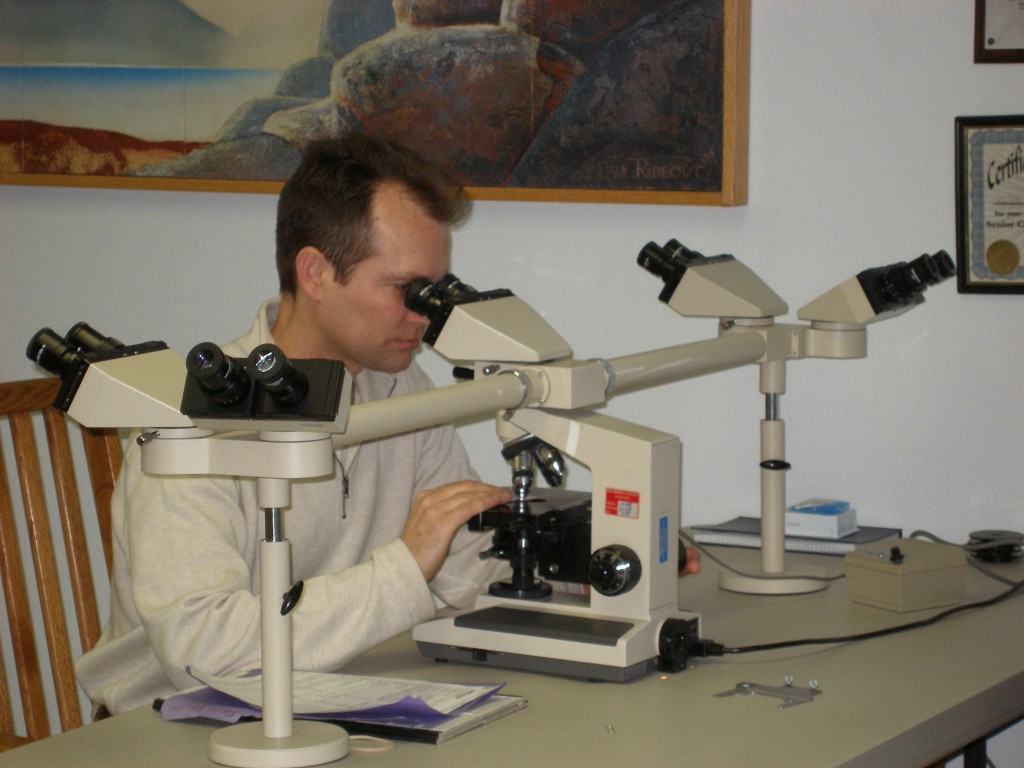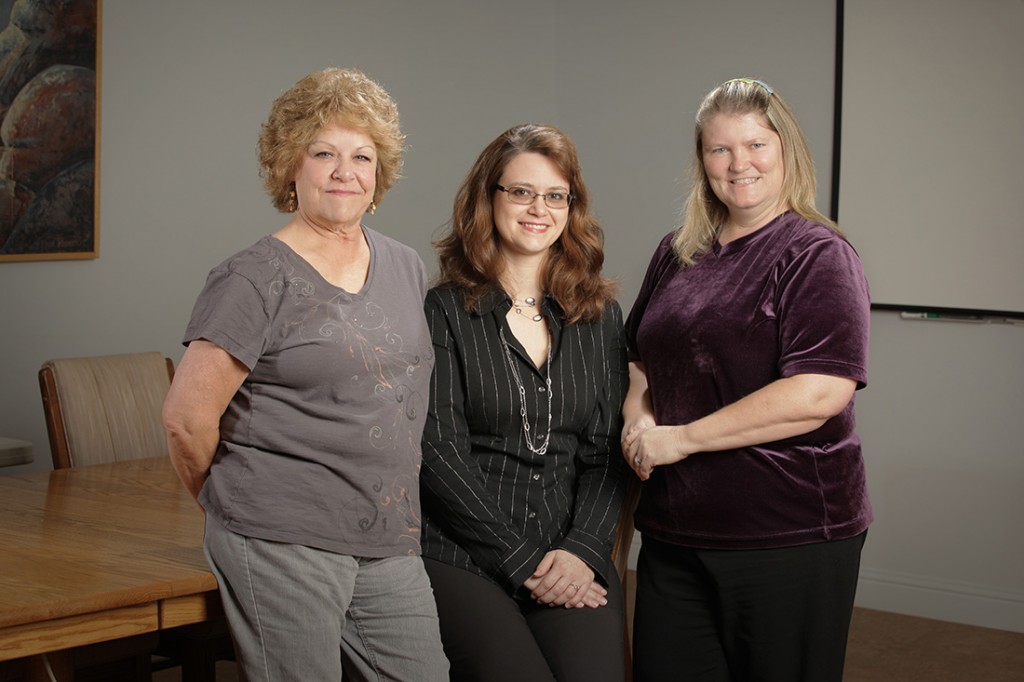Step 1
The body tissue specimen arrives at our lab and is labeled with an identification number.
Step 2
The specimen is removed from its bottle and carefully examined. Sometimes the tissue must be dissected into smaller portions. The tissue is then placed into small plastic “cassettes” for processing. The physician/certified histotechnologist uses a hands-free microphone to record his or her findings, which are later transcribed as the gross description of the final pathology report.
Step 3
All the tissue from that day’s cases are processed overnight. The tissue is then embedded into a paraffin wax block.
Step 4
The following morning, histotechnologists slice through the wax and tissue to create sections that are 4 microns thick. The sections are floated across a water bath and picked up with a glass slide.
Step 5
Using special machines and equipment, the slides are treated with stains to make them easier to examine under a microscope.
Step 6
Our pathologists examine the slides for each case under the microscope to determine the diagnosis for each patient.
Step 7
The pathologist’s findings are dictated and transcribed as the microscopic and diagnosis portion of the report. The pathologist reviews the full report for each case and signs it.
Step 8
The reports are then available on the web site, faxed, or delivered to the referring physician or facility as per their request.
Step 9
The slides and cassettes with embedded tissue are filed in special containers to protect them. The slides and blocks are maintained for at least 10 years.

